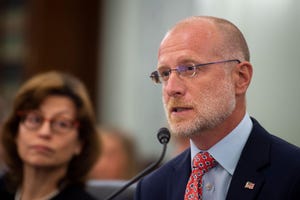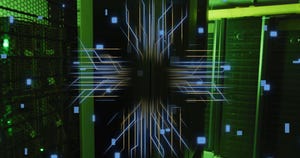Virtualization Software Goes Beyond X86 ClonesVirtualization Software Goes Beyond X86 Clones
Vendors tout added capabilities and new constituencies
November 6, 2006

Virtualization software, which turns one hardware server into several virtual servers, is garnering a lot of attention, and the leading vendors aren't losing opportunities to upgrade their offerings to try and one-up one another in market share and mindshare.
Market leader VMware is offering to virtualize the corporate software testing lab. XenSource, the open source entry in the virtualization market, says it can now generate both Windows 2003 and Linux virtual machines. And IBM, with its usual above-the-fray stance, says it can manage cross-platform virtual machines and integrate them into its system for physical-asset management. All three called attention to their latest virtualization moves on the eve of VMware's annual user conference this week in Los Angeles.
VMware is hoping to push virtualization beyond its traditional role of consolidating x86 servers in the data center and to provide efficiencies in the test phase of application development as well. Enterprise testers typically call on their IT departments to set up servers running combinations of various operating systems and applications to help them ensure that new apps run as expected. Handling the server setup and teardown through virtual machines can mean substantial savings for a test lab, says James Phillips, VMware's senior director of virtual software life-cycle automation.

 A software tester can log on to VMware Lab Manager through a browser and, instead of calling for IT help, consult a library of software configurations. After selecting the combination he or she wants to test--say, a new customer-service application running on Windows Server 2003--the tester can, "on a self-service basis, check out resources and have those resources provisioned as virtual machines," Phillips says.
A software tester can log on to VMware Lab Manager through a browser and, instead of calling for IT help, consult a library of software configurations. After selecting the combination he or she wants to test--say, a new customer-service application running on Windows Server 2003--the tester can, "on a self-service basis, check out resources and have those resources provisioned as virtual machines," Phillips says.
Less IT staff and fewer physical servers mean less overhead. Testers have better control over the test environment, have a better record of what gets tested, and will most likely be able to reduce the time it takes to test applications, says IDC analyst Stephen Elliot.VMware is the leader, but XenSource offers another reason to take virtualization seriously. XenSource, which was formed to commercialize the open source virtualization engine Xen, launched XenEnterprise in August. At the time, XenEnterprise generated Linux virtual machines on a server. Now XenEnterprise can create Windows virtual machines as well, says XenSource CTO Simon Crosby. XenEnterprise supports Windows 2003 and Windows XP virtualization; Windows 2000 support will be added next year and Windows Longhorn in 2008.
CARD SHARK
But the virtual trump card was played by IBM, already strong in systems management with its Director software for managing physical computing assets. For Director 5.2, unveiled last week, IBM has built a Virtualization Manager plug-in that will give system administrators a dashboard view of their virtual machines alongside views of their physical machines. The browser-based pairing, for the moment at least, puts IBM in the lead in managing both kinds of asset, IDC's Elliot says. "Everybody wants a single pane of glass."
That physical-virtual management combo could be a future opportunity for CA, with its CA-Unicenter systems management program, as well as BMC Software, which has Patrol, and Hewlett-Packard, with its OpenView. VMware, which focuses on generating and managing virtual machines, is unlikely to venture into physical asset management, but its parent company, EMC, might do so, as it already has paired physical and virtual asset management in storage. Says IDC's Elliot: "EMC could be a big winner here as well."
You May Also Like


